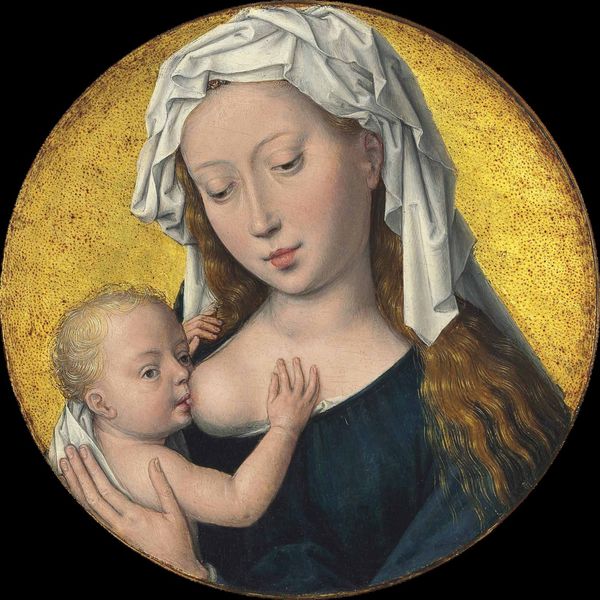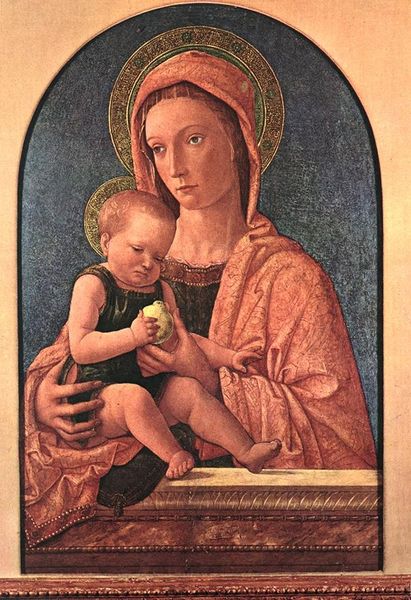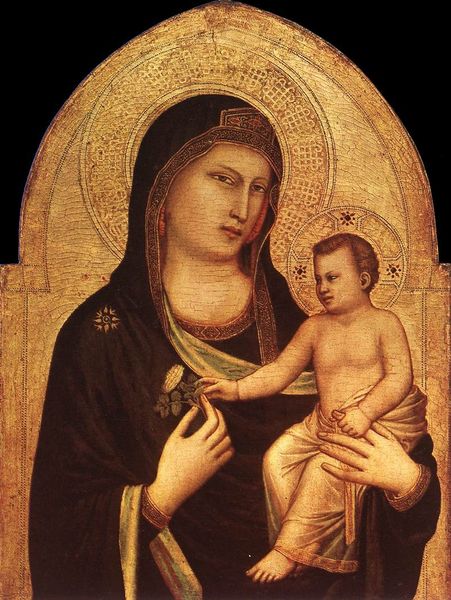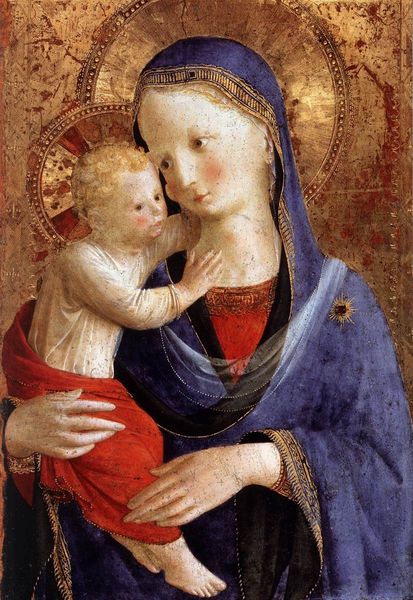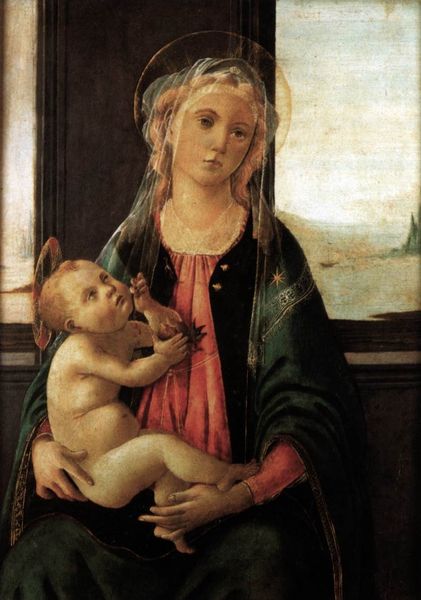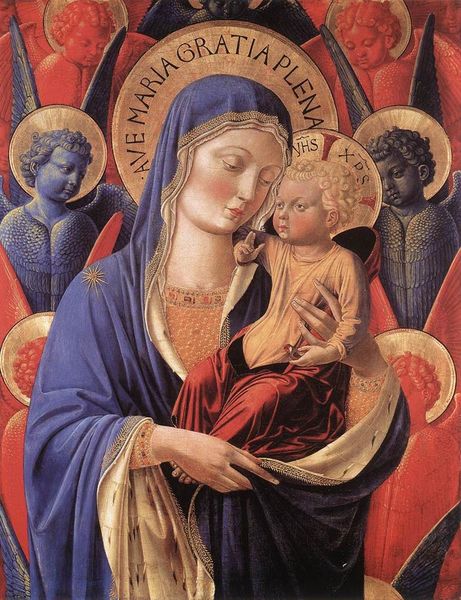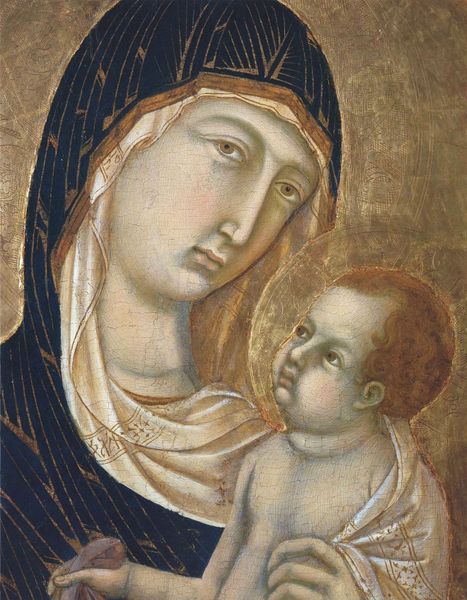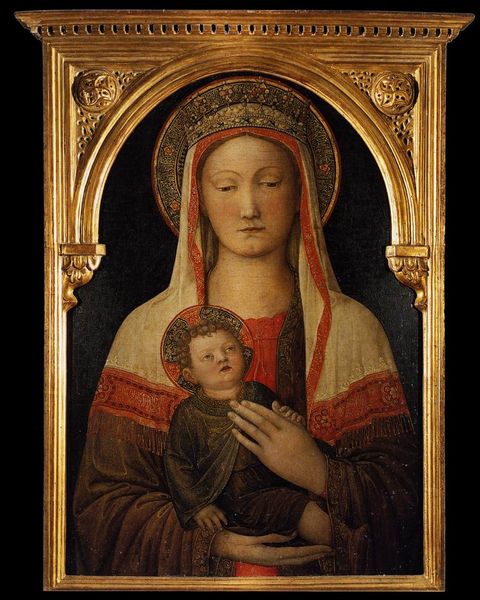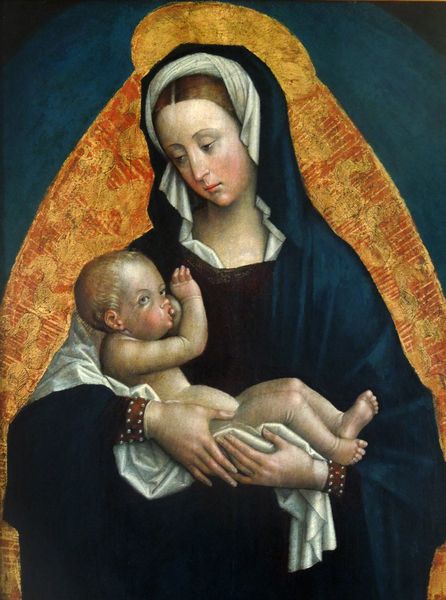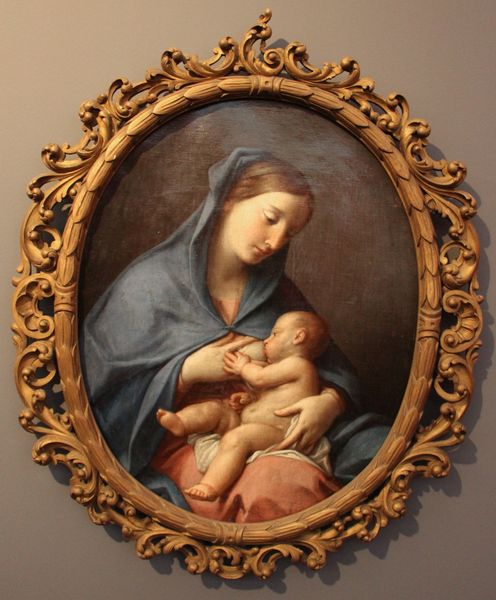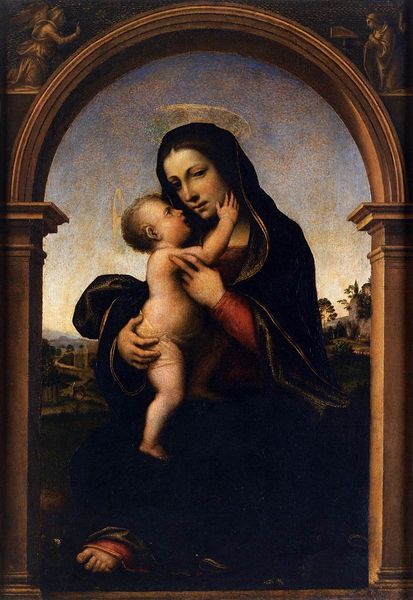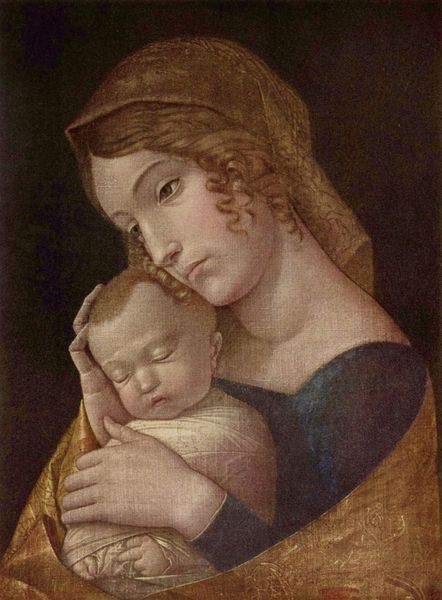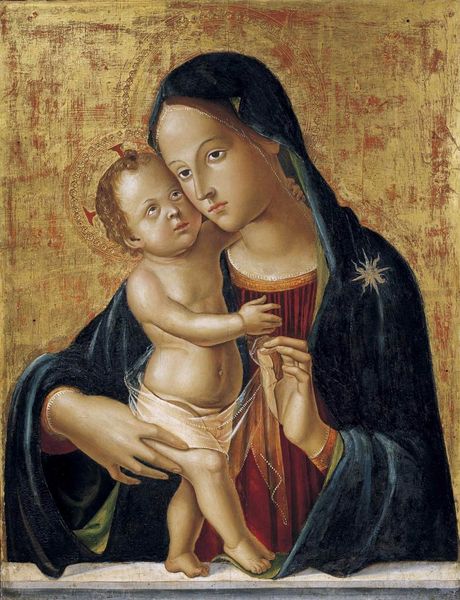
painting, oil-paint
#
portrait
#
high-renaissance
#
painting
#
oil-paint
#
figuration
#
italian-renaissance
Copyright: Public domain
Hans Memling’s “Virgin Suckling the Child,” an oil painting made around 1470, showcases not only artistic skill but also the economic and social contexts of its time. The painting's rich colors and smooth textures are products of Memling’s mastery of oil paint. The layering of thin glazes, a technique perfected in the Netherlands, creates depth and luminosity. The gold background, likely applied with a fine brush, enhances the sacredness of the scene. Consider the cost of these materials: pigments ground from precious minerals, linseed oil refined through a laborious process, and the artist's own time and labor. Such a painting was a luxury item, commissioned by wealthy patrons. Its intimate scale suggests it was made for private devotion, reflecting the rising merchant class, who sought personalized expressions of faith. Memling’s attention to detail, from the delicate fabric of the Virgin’s veil to the tender embrace, elevates the scene. By understanding the materials and making processes, we can appreciate the artwork as both a spiritual image and a product of its time, blurring traditional distinctions between art and craft.
Comments
No comments
Be the first to comment and join the conversation on the ultimate creative platform.
